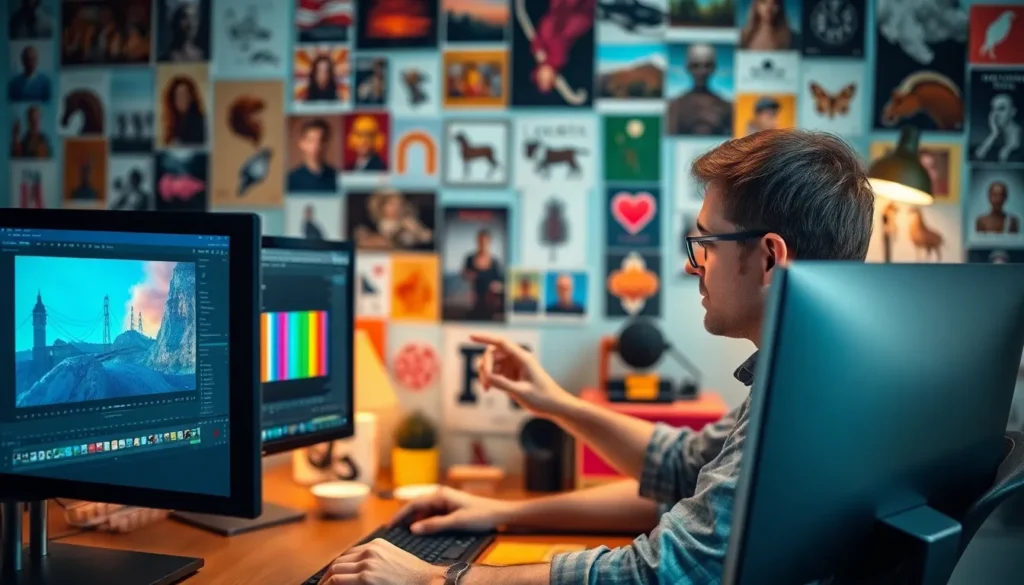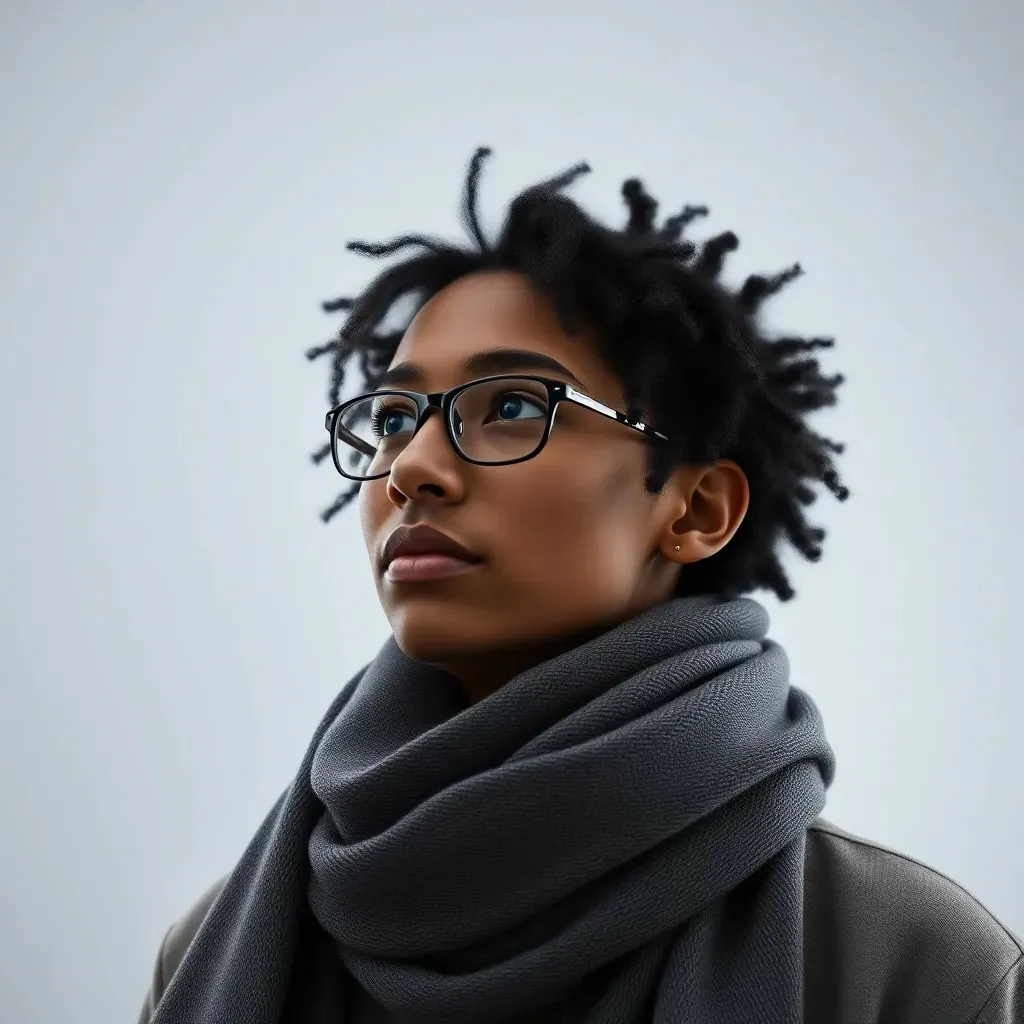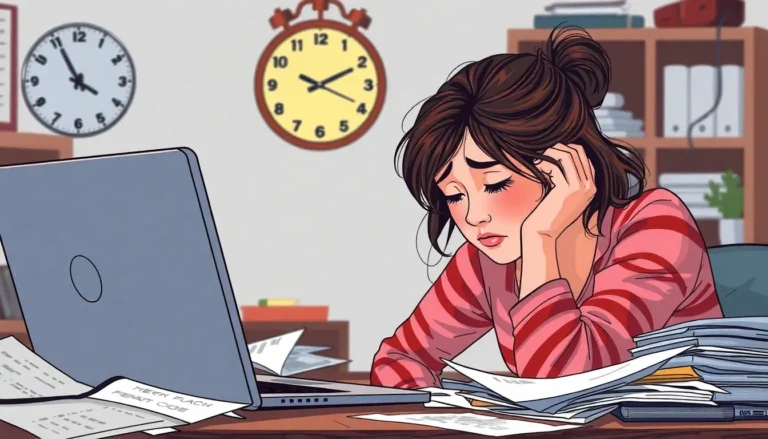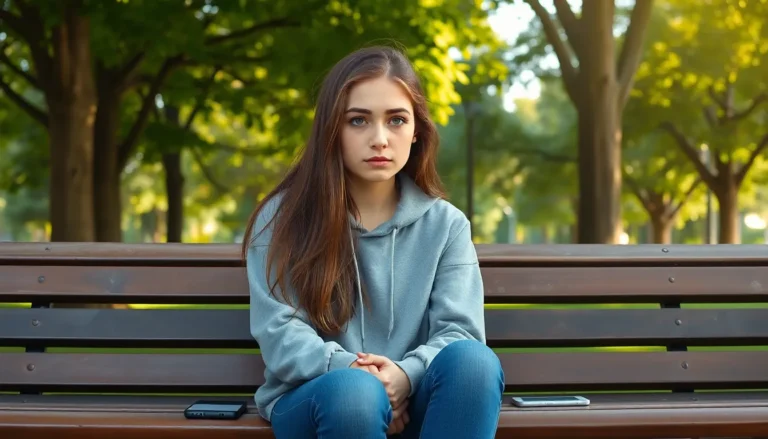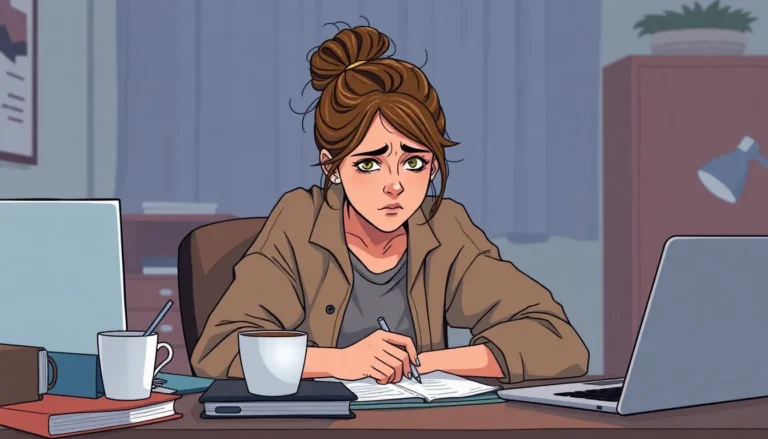Color correction isn’t just for artists or photographers; it’s for anyone who wants their visuals to pop like a perfectly ripe avocado. Imagine scrolling through your photos and realizing they look more washed out than last week’s leftovers. With color correction, those dull images transform into vibrant masterpieces that make your audience say, “Wow, I need to see more!”
Table of Contents
ToggleUnderstanding Color Correction
Color correction enhances the visual quality of images and videos by adjusting color balance, saturation, and contrast. This process benefits various media formats, making visuals appealing and engaging.
What Is Color Correction?
Color correction refers to the technique of adjusting colors in images or videos to achieve a desired look. This process often involves modifying exposure, contrast, and color temperature. Professionals use software tools like Adobe Premiere Pro or DaVinci Resolve for precise adjustments. Achieving accurate colors ensures consistency across various scenes or shots. Color grading, which enhances mood and tone, often follows the correction stage.
Importance of Color Correction in Media
Color correction plays a vital role in media production. It maintains visual consistency across projects, ensuring that colors appear true to life. Enhanced images capture viewer attention, leading to increased engagement and emotional impact. Professionals recognize that vibrant colors can evoke specific feelings and set the overall tone of a piece. In marketing, effective color correction influences brand perception, making visuals memorable and compelling.
Techniques of Color Correction
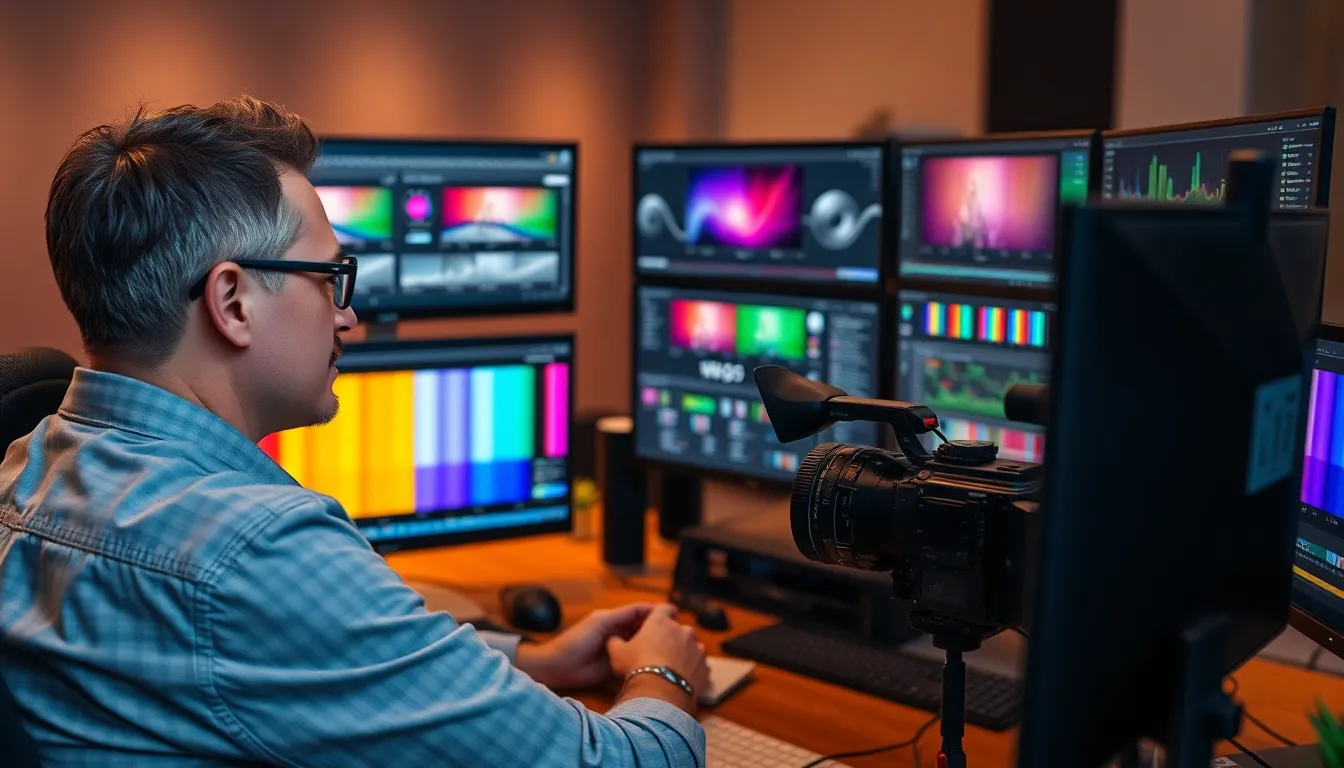
Color correction encompasses various techniques that enhance the visual impact of images and videos. Both basic and advanced methods play a critical role in achieving exceptional results.
Basic Color Correction Techniques
Basic color correction techniques include adjustments to exposure, contrast, and color balance. Adjusting exposure ensures the image reflects the right light levels, avoiding washed-out highlights or shadowy details. Contrast enhancement makes the difference between lighter and darker areas more pronounced, bringing depth to the visual. Color balance adjustments rectify color casts, providing a more neutral and natural appearance. Software tools like Adobe Premiere Pro and DaVinci Resolve offer features to facilitate these adjustments, allowing users to transform ordinary visuals into engaging content.
Advanced Color Correction Techniques
Advanced color correction techniques expand creative possibilities for media producers. Utilizing color grading, professionals can manipulate hues for artistic expression. Keyframe adjustments enable dynamic changes in color over time, enhancing storytelling within a scene. Working with scopes, such as histograms and waveforms, ensures precise monitoring of color values. Color wheels further fine-tune specific color ranges, allowing for targeted corrections. Additionally, LUTs (Look-Up Tables) provide instant transformations and can significantly streamline workflows. Mastering these advanced techniques creates visually striking narratives that captivate audiences.
Tools for Color Correction
Color correction relies on various tools that enhance visual appeal. These tools can be broadly categorized into software options and hardware used in the process.
Software Options for Color Correction
Numerous software solutions exist for color correction tasks. Adobe Premiere Pro excels in offering advanced editing features alongside robust color grading tools. DaVinci Resolve stands out as a favorite among professionals due to its powerful color correction capabilities. For those seeking more user-friendly options, Final Cut Pro provides an intuitive interface with essential color correction features. Additionally, software like Capture One offers specialized tools for adjusting color in photos. These platforms support corrections like adjusting exposure and saturation, making visuals shine.
Hardware Used in Color Correction
Hardware plays a significant role in achieving precise color correction. Professional color grading monitors ensure accurate color representation and viewing angles. Devices, such as color calibrators, help maintain consistency across different displays. A control surface provides tactile control over color adjustments, enhancing workflow efficiency. Graphics cards with strong capabilities boost processing power during editing tasks, minimizing lag. Incorporating these hardware tools optimizes the color correction process, ensuring that visuals maintain their intended impact.
Color Correction in Different Industries
Color correction plays a pivotal role across various industries. Each sector utilizes different techniques and tools to achieve desired outcomes.
Film and Television
Film and television production heavily relies on color correction. Cinematographers and editors fine-tune exposure and color balance to enhance the visual storytelling. The process adjusts contrast for dramatic effect, ensuring scenes resonate with audiences emotionally. Software like DaVinci Resolve remains a popular choice among professionals. Colorists harness their skills to create moods that align with narratives. By refining colors, they guide viewer perception and engagement, making visuals more impactful and memorable.
Photography
In photography, color correction enhances the overall aesthetic appeal of images. Photographers often encounter lighting challenges; therefore, adjustments to saturation and temperature become essential. Using tools like Adobe Lightroom, they manipulate colors to achieve a natural look. Proper color correction improves both portrait and landscape images, drawing attention to key subjects. This technique supports the photographer’s vision, ensuring colors represent reality or convey emotion accurately. Each adjustment helps create a cohesive portfolio that resonates with clients and audiences.
Graphic Design
Graphic design utilizes color correction to achieve visual harmony. Designers focus on ensuring brand consistency across various projects. Adjusting colors enhances logos, advertisements, and digital content, making them visually appealing. Software like Adobe Photoshop and Illustrator provides designers with robust tools for precise color adjustments. These adjustments impact how brands are perceived, influencing consumer behavior. In turn, color correction elevates designs, creating compelling visuals that communicate messages effectively.
Color correction is a powerful tool that transforms visuals across various media formats. By mastering both basic and advanced techniques, creators can enhance the emotional impact of their work and ensure consistency in their visual storytelling. The right software and hardware play a crucial role in this process, enabling precise adjustments that can make all the difference in viewer engagement. As industries continue to evolve, the importance of effective color correction will only grow, solidifying its place as an essential skill for anyone involved in visual media. Embracing these techniques not only elevates the quality of visuals but also strengthens brand identity and audience connection.

